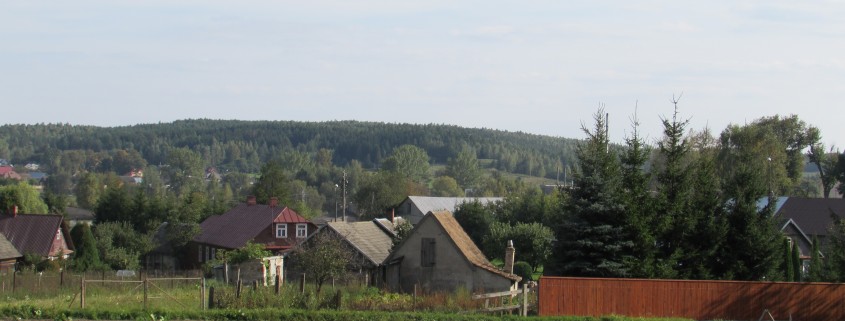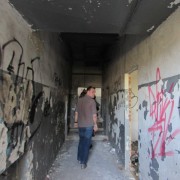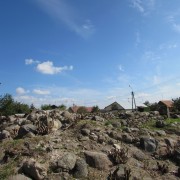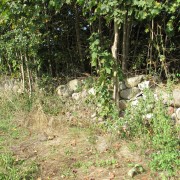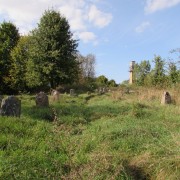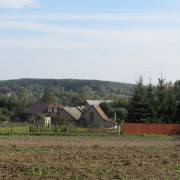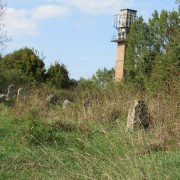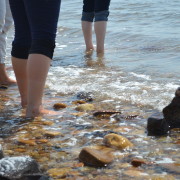Remnants of the Past
By: Katelyn Olsen
Perhaps one of the saddest sights to see is a place that was clearly once so full of life and culture falling into a state of disrepair. Krynki, a city with a population of 9,000 (70% of which were Jews) in its prime, now has only 2,000 residents (without a single Jew present).
We started our time in Krynki at an abandoned tannery. In its prime, the city had over 24 tannery factories and 60 small workshops. Now the main street of tanneries is almost completely abandoned. As our guide, Cecylia, led us through one of the many abandoned tanneries, I couldn’t help but wonder what this town looked like years ago. What I imagine once being a center of livelihood in Krynki now gives me chills as broken bottles and ancient dust line the floors and graffiti fills the walls.
In many ways, this introduction to Krynki set the stage for much of our visit. The disappearance of the Jewish culture and people clearly left a gaping hole that this community has yet to really acknowledge or reconcile with. This is clear both in the tannery district and the Market Square because the Jewish community owned many of the businesses that helped the city to flourish. However, in their absence, the city feels vacant.
Of the places that Cecylia took us, the conditions of two of the synagogues made it clear to me that this town is lacking in attempts to make contact with its Jewish past and is instead trying to forget it. A striking example of this was the conversion of one of the old synagogues into a dance hall where a disco was held, shortly following WWII and the death of millions of Jews. It is currently being used as a gym. This, combined with the overgrown ruins of the Great Synagogue, left me with more questions than answers.
When our tour continued with a new guide, Joanna, the evidence of the tense past in Krynki continued to grow. Walking through the town we saw a myriad of houses that appeared to be anywhere from 10 to 100+ years old. New houses were just yards away from homes that looked as if they were barely standing. The stark contrast between them gave me a distinct feeling of uneasiness within the town.
Not only did this contrast give an indication of the possible tensions within the town, even today, it also demonstrated a sincere lack of pride in the conservation of both the town’s aesthetics and history. While I might see a well-kept garden in one yard, just next door the yard would be overgrown with weeds.
The walk through town leads us through the back roads of a farm and eventually brought us to the edge of a field. One edge of the field is lined with stones of varying sizes, forming a wall that is falling apart in some places. This wall, that appears to be long since forgotten, establishes the border of the old Jewish cemetery.
Despite the dilapidated wall surrounding the cemetery and the knowledge I already had, I still held out some hope that the graves I would be seeing would still be mostly intact. Once we stepped foot inside the cemetery, however, my hopes were immediately dashed. Had some of the gravestones been much shorter, I could have mistaken the cemetery as an empty field.
The long overgrown grass masked what few grave stones appeared to be left. Grave stones that were carefully and lovingly hand carved to mark the resting place of parents, friends, children, and more. Just the knowledge that these sites are not being given the respect and recognition that they deserve is incredibly heartbreaking.
As a whole, our afternoon in Krynki was eye-opening on many levels. While we have seen different places that are trying to come to terms with their Jewish histories and the tragic effect World War II had on them, this small town (with the exception of a few locals) appears to be intent on keeping the past in the past.
What I find to be the most unsettling here is the distinct lack of pride in this community. Pride in their history, pride in their upkeep, and pride in their community as a whole. As Krynki continues to age and the population continues to shrink, I can’t help but wonder what an incredible part of history will be lost with their memories.
At most, it is my hope that in Krynki, and places like it, people might begin to see the communal benefits in embracing and reconciling with their communities’ pasts as a way to secure a more harmonious and tolerant future for the community as a whole.
Follow my blog at: https://behindorangecurtain.wordpress.com

